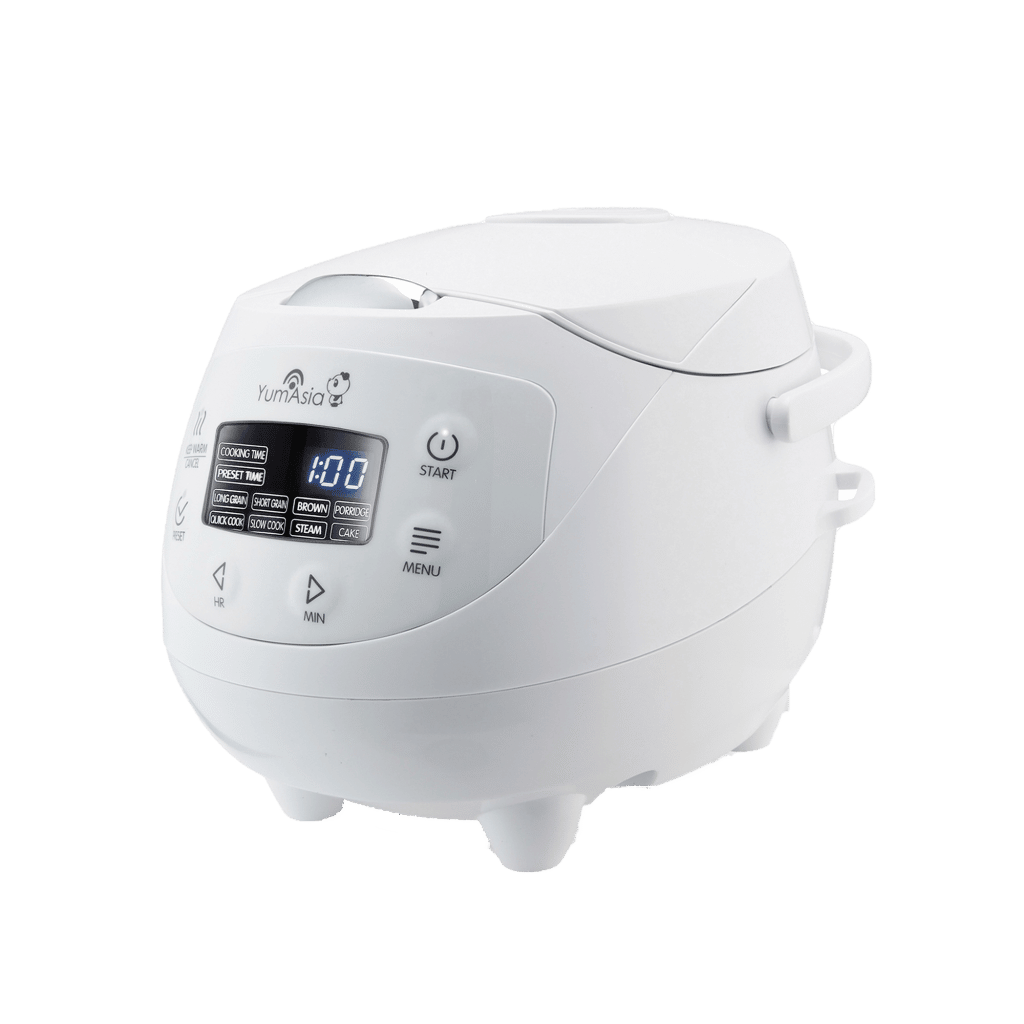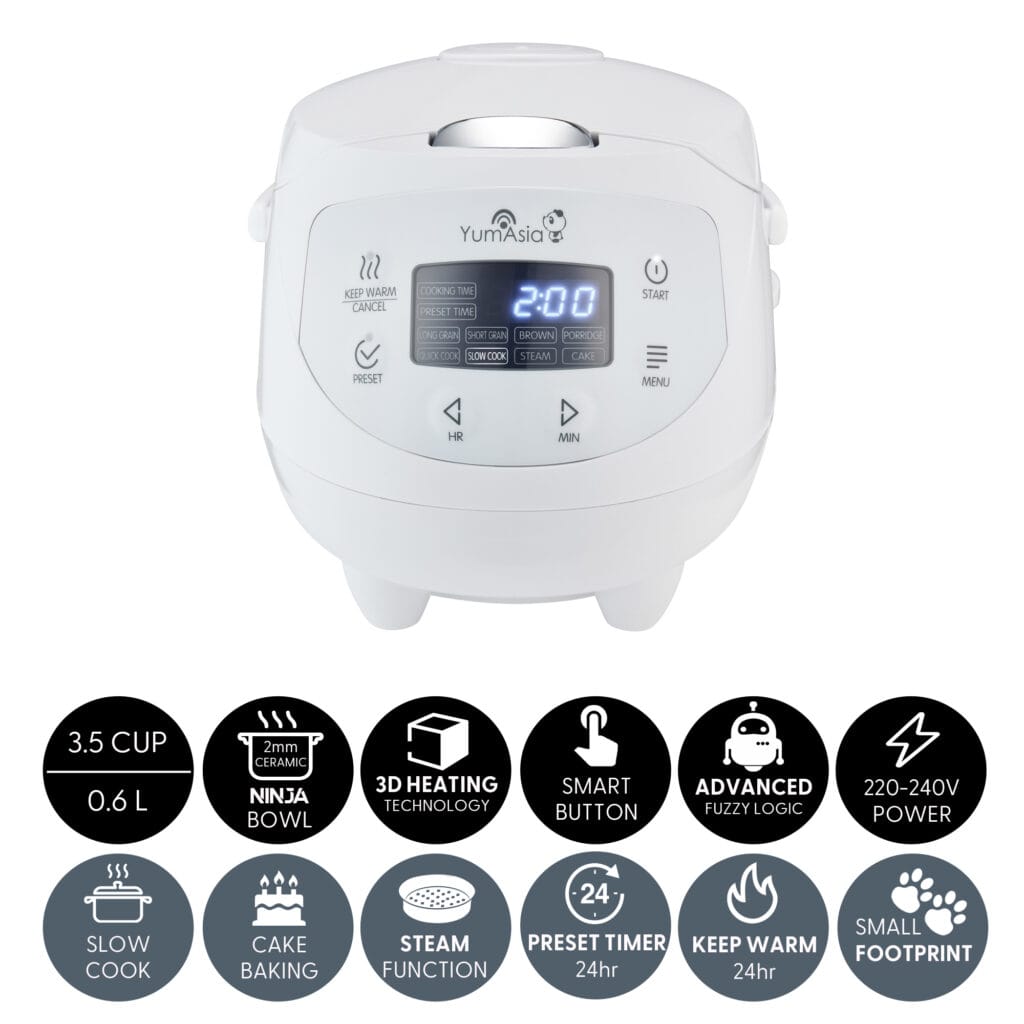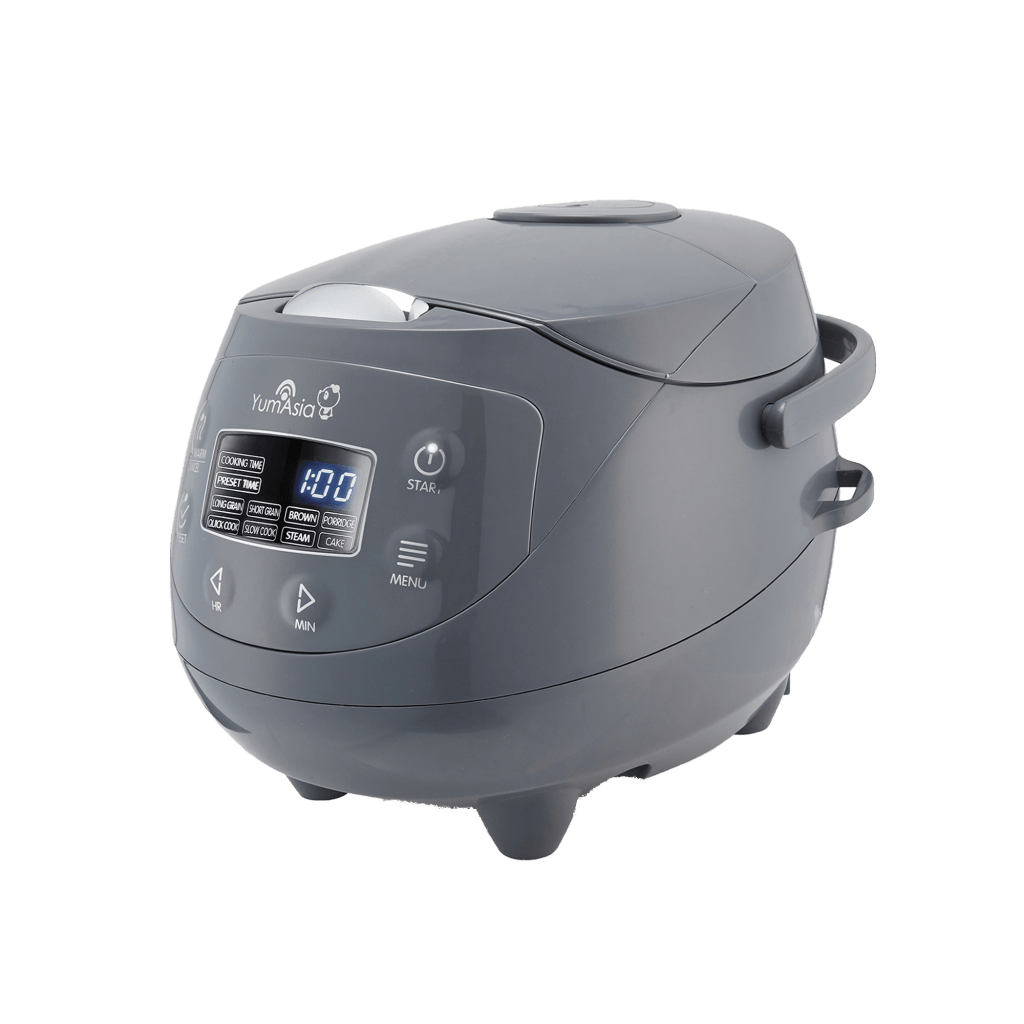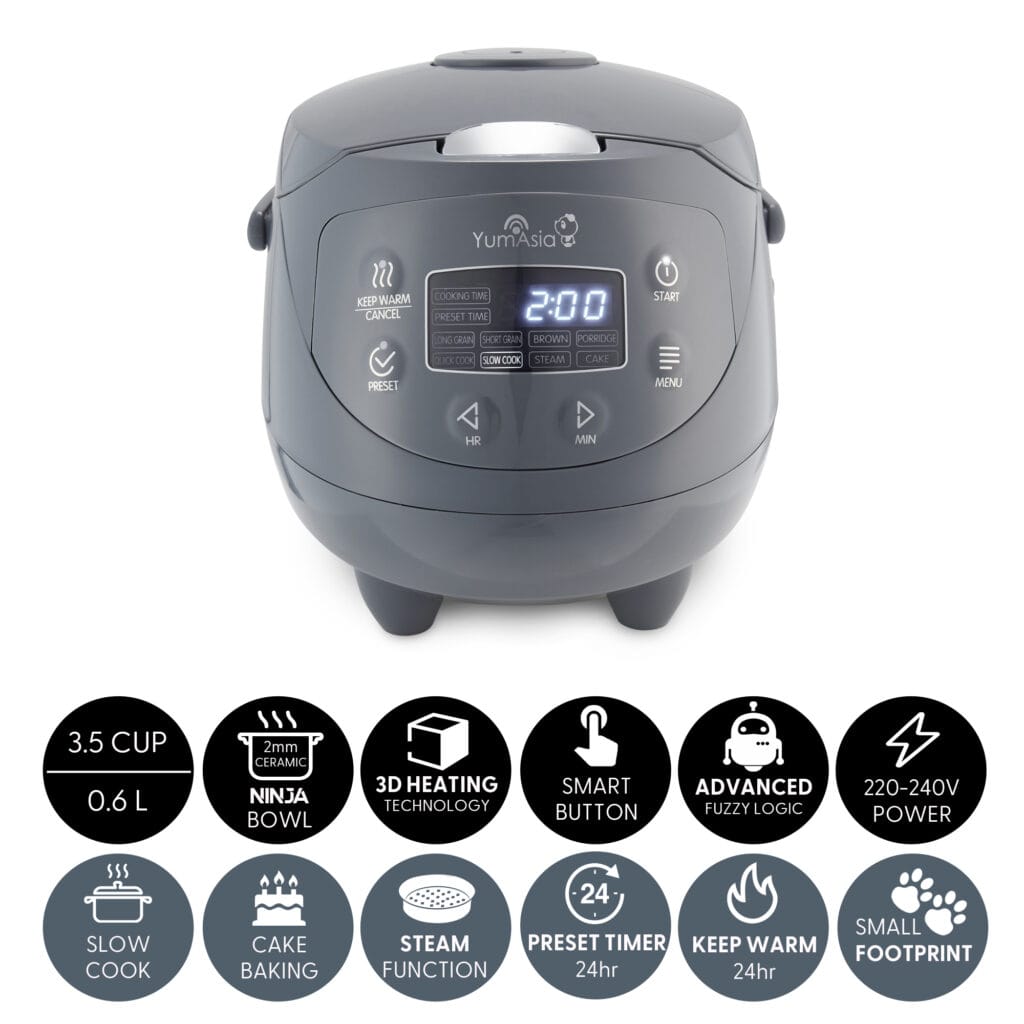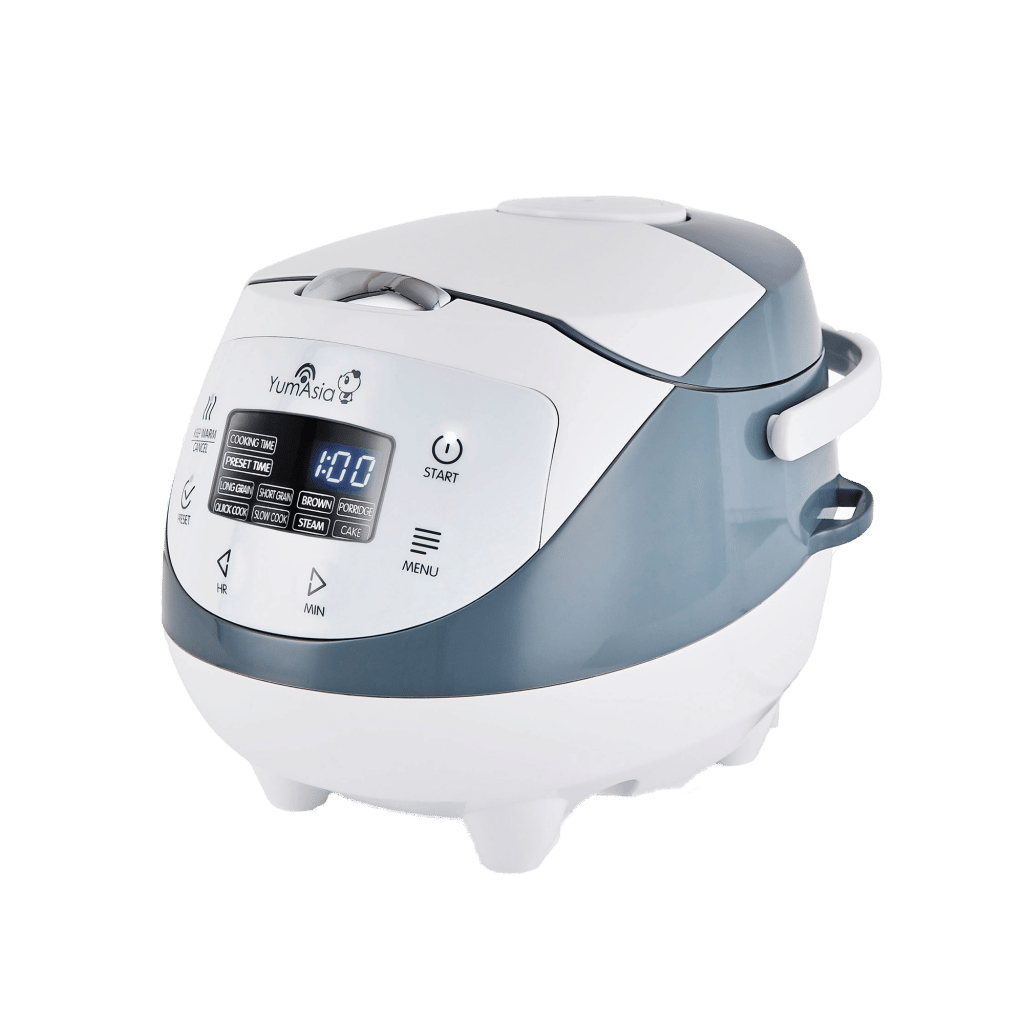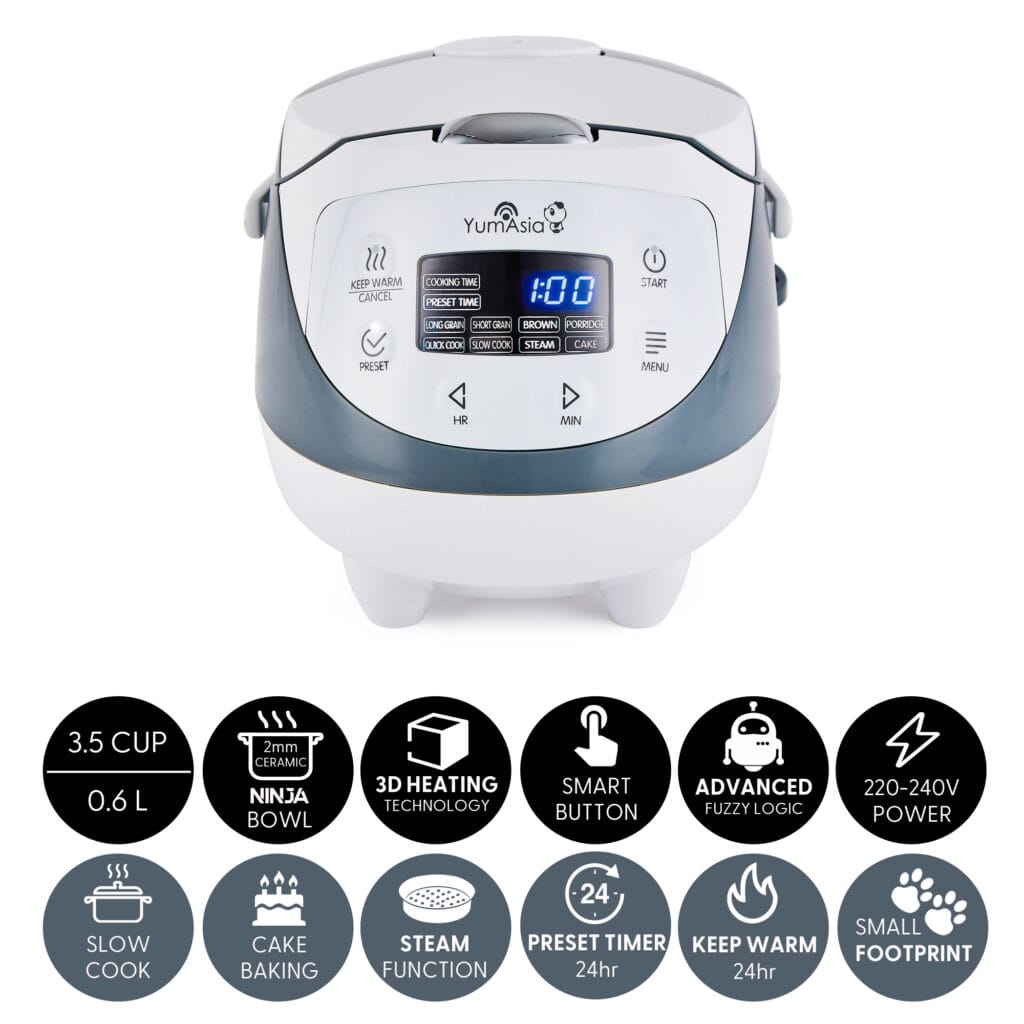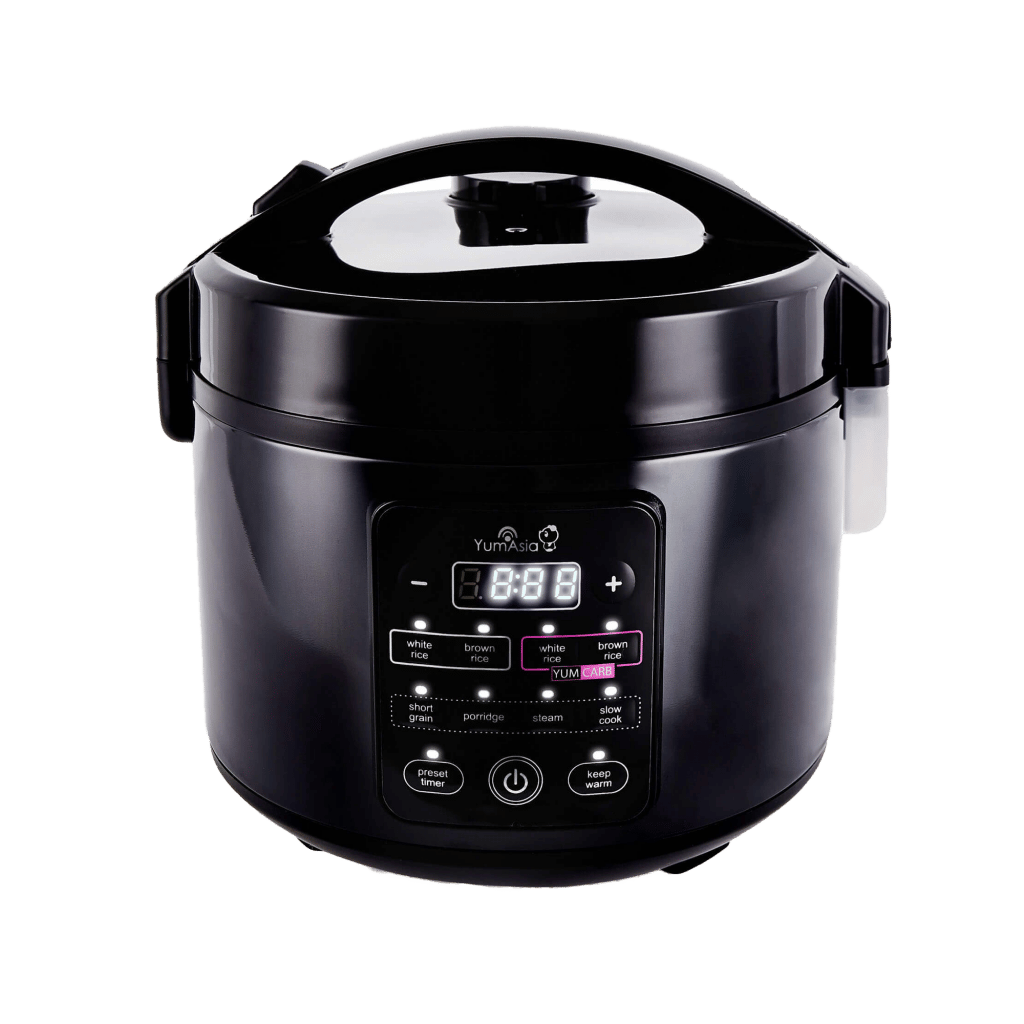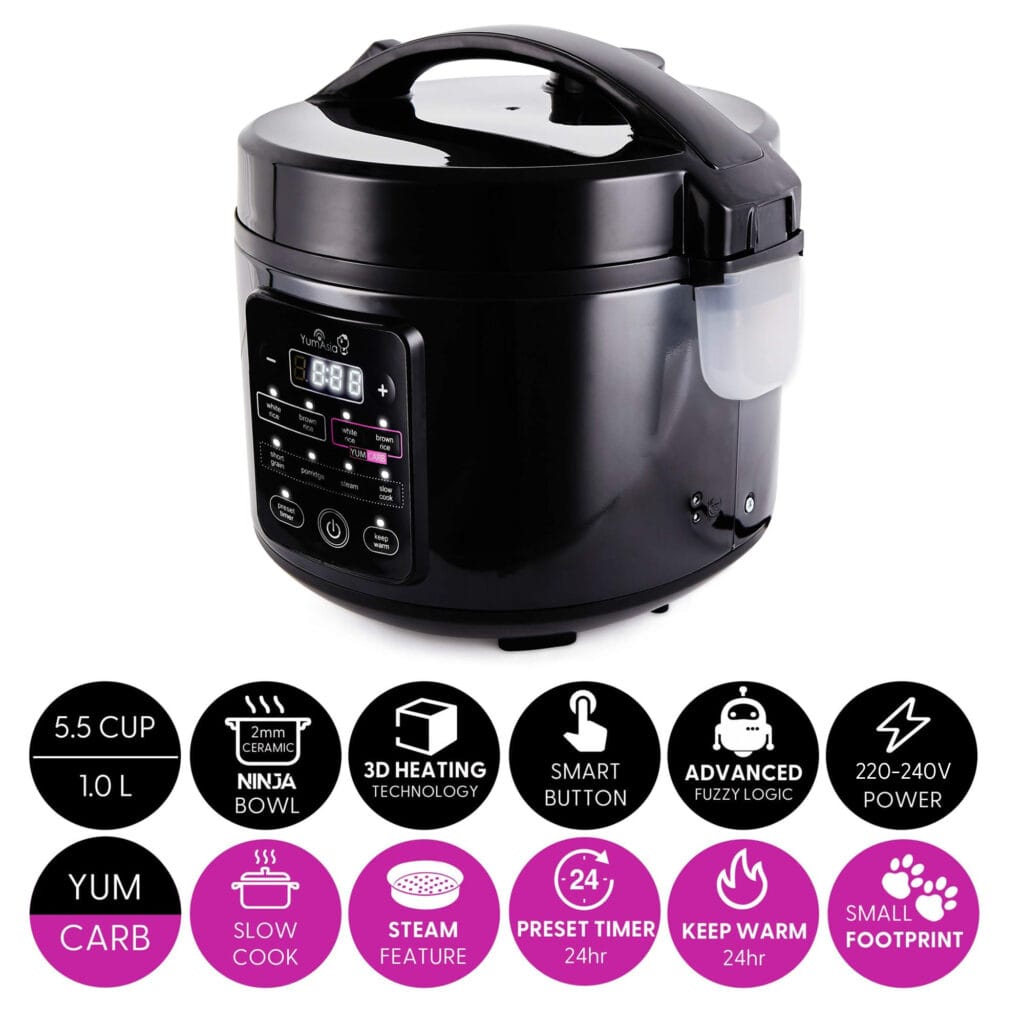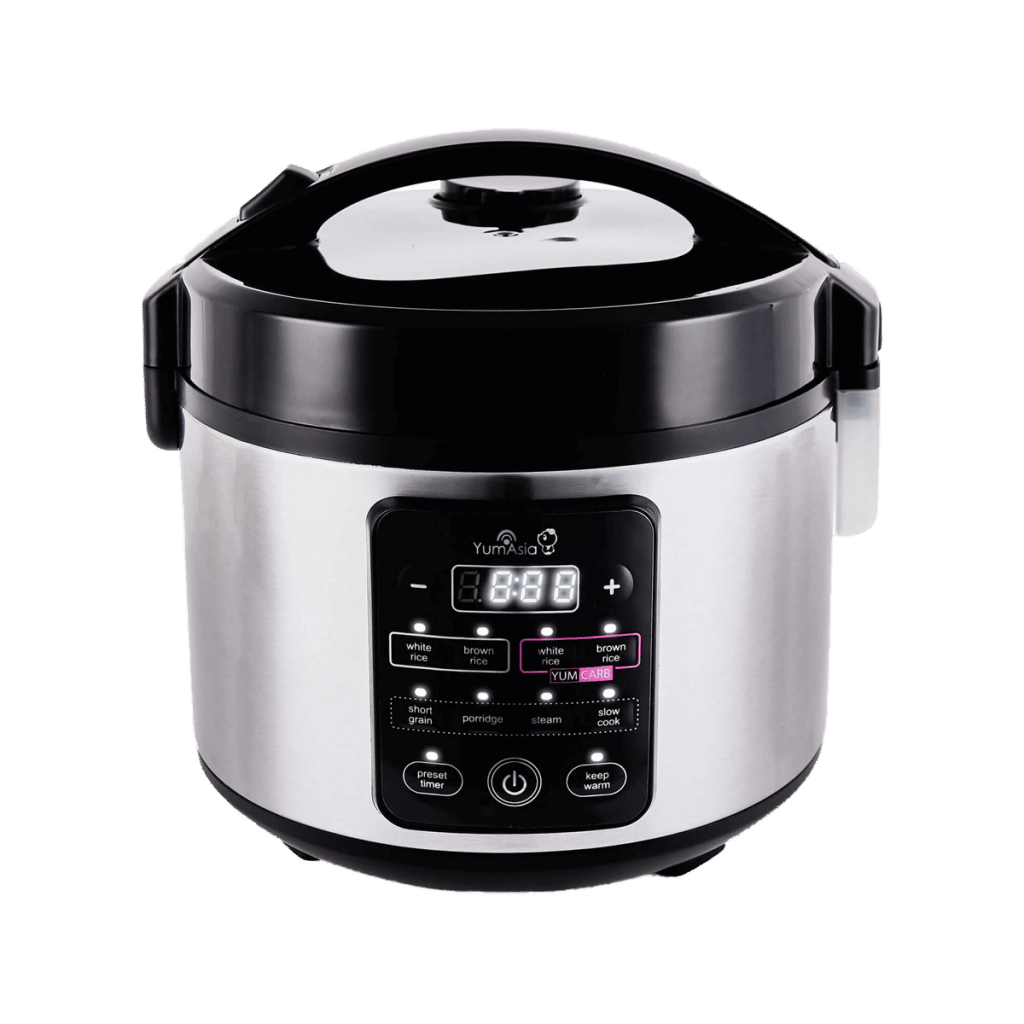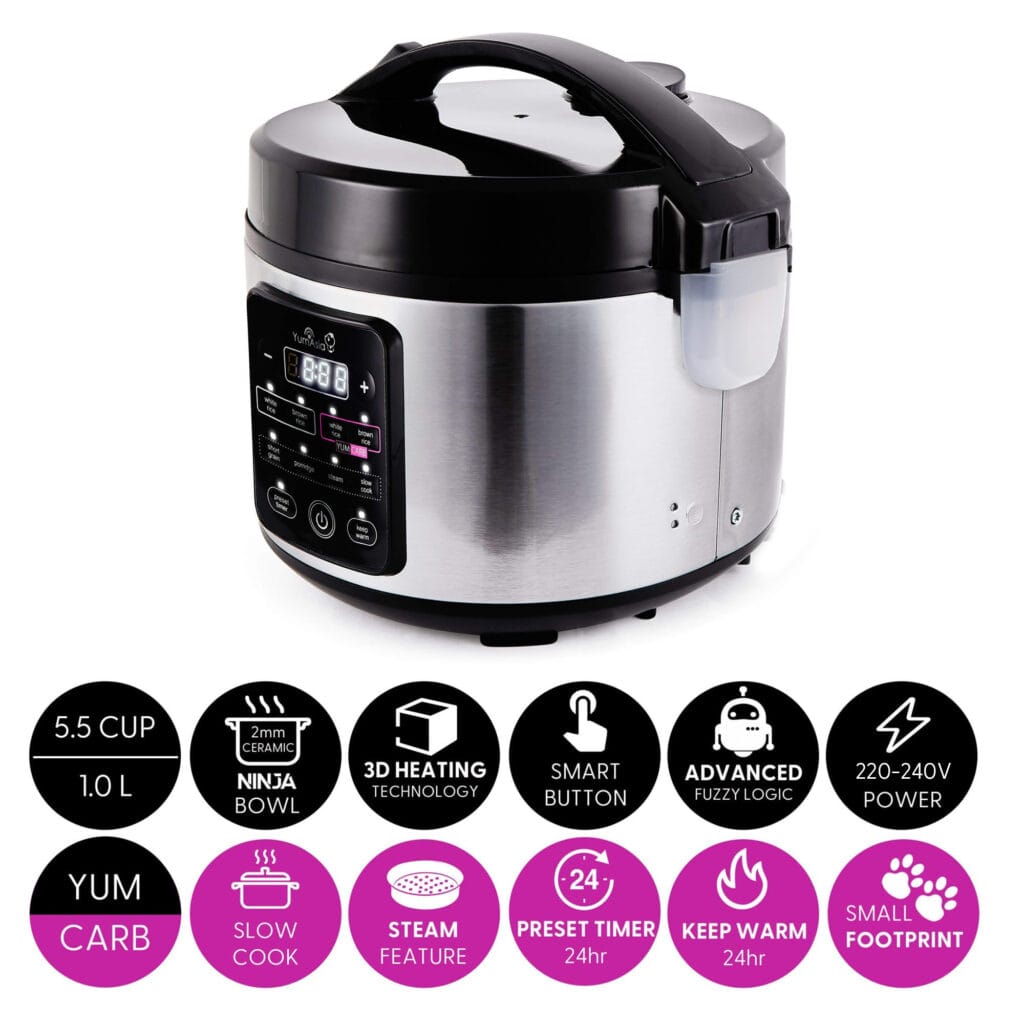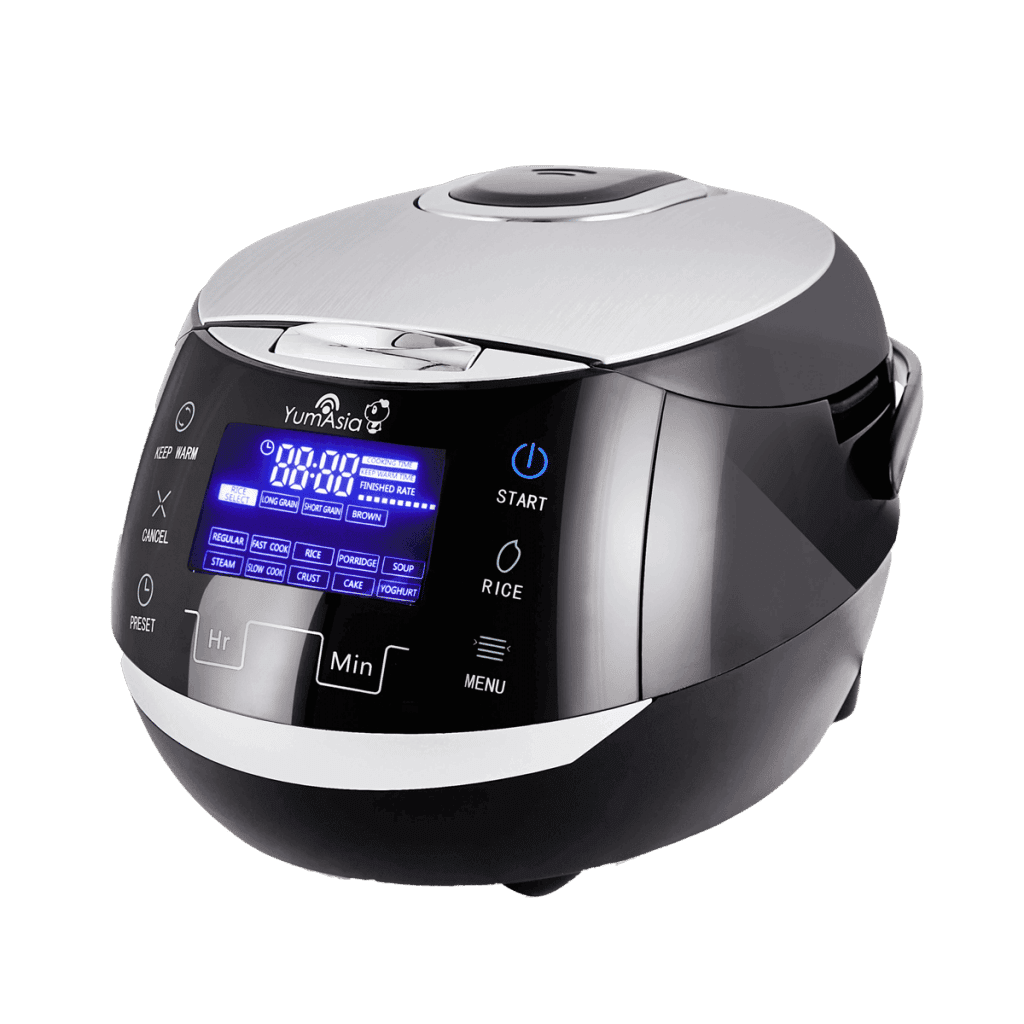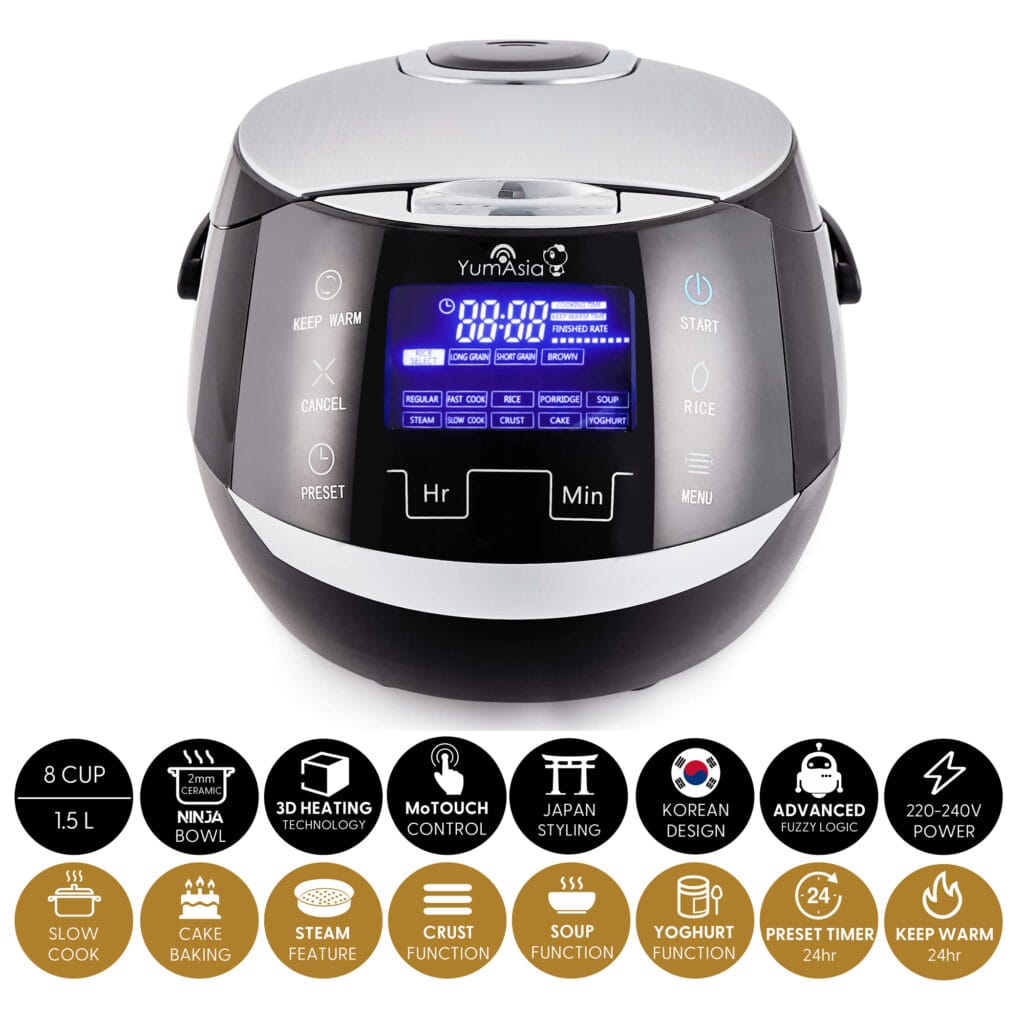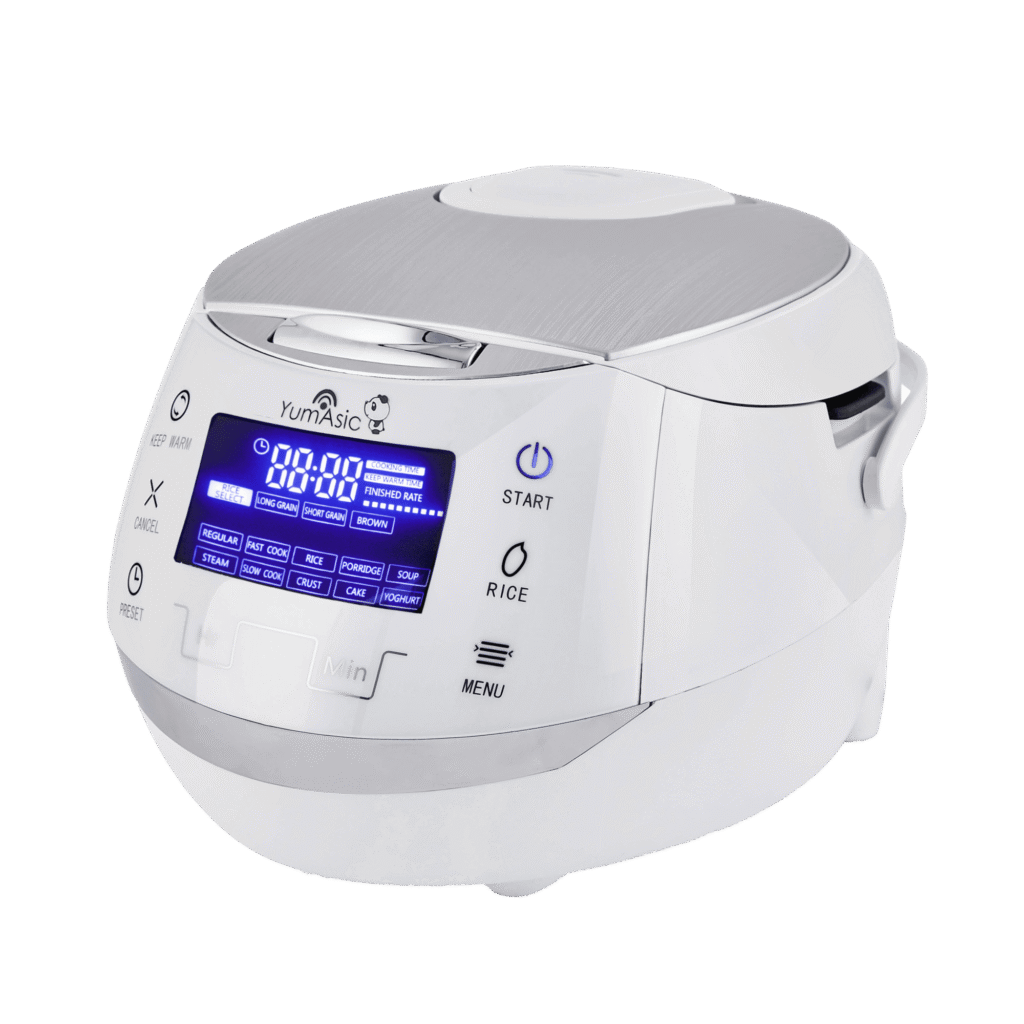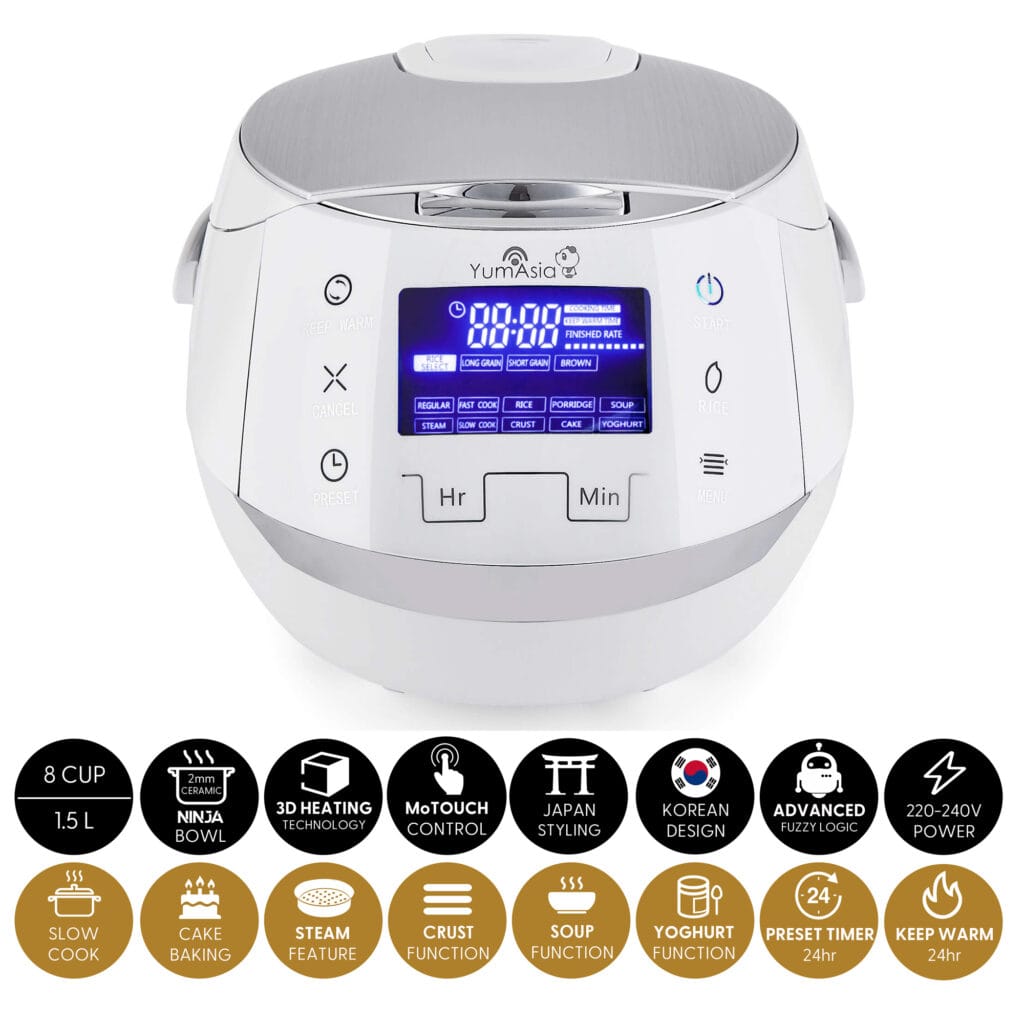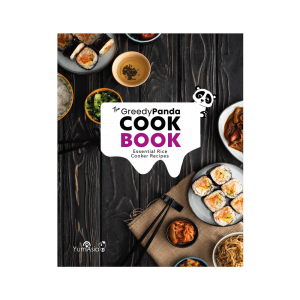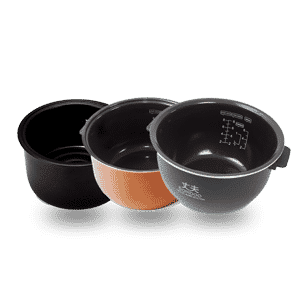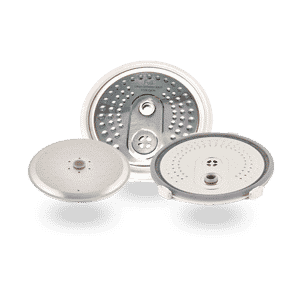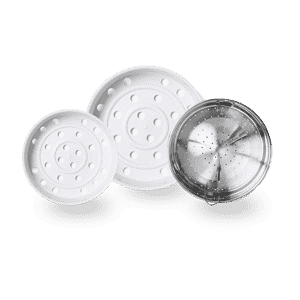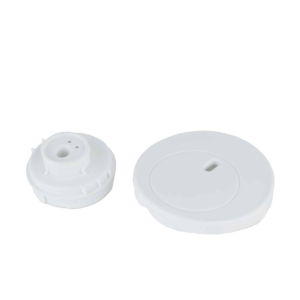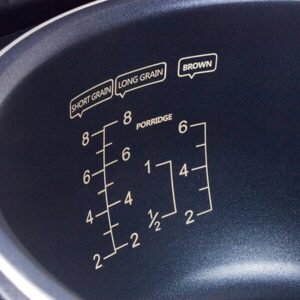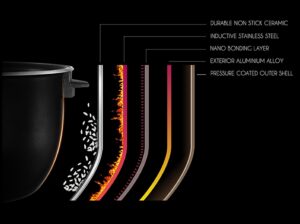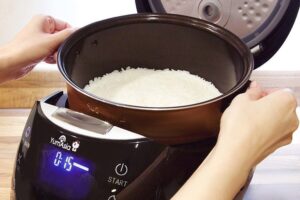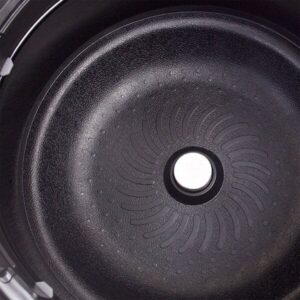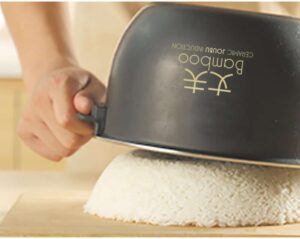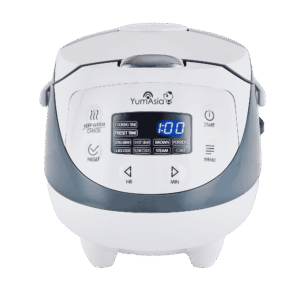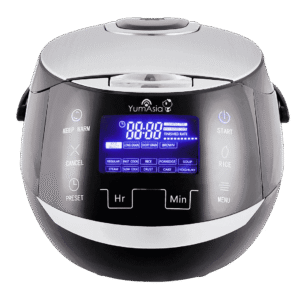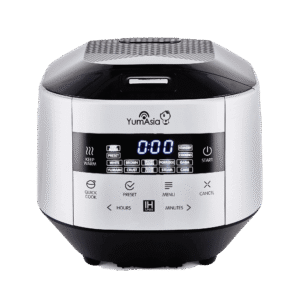The Yum Factor Why Our Rice Cookers Are The Best
We look at
- Rice Cooker TypesRice Cooker Types
- Our Signature BowlsOur Signature Bowls
- UMAI Induction Heating (IH)UMAI Induction Heating (IH)
- Advanced Fuzzy LogicAdvanced Fuzzy Logic
- GABA Rice FunctionGABA Rice Function
- Yumami Rice FunctionYumami Rice Function
- YumCarb FunctionYumCarb Function
-

They Think For You
-

What We Mean By The Yum Factor
Our products are designed to be different and to standout from the crowd. We do this by developing unique functions and features, designing our products to look good and be constructed of better, safer materials and with high quality workmanship.
What we call the Yum Factor can be anything from carefully calculated rice cooking advanced fuzzy logic cooking phase cycles with AI to our signature healthy ceramic coated inner bowls or our unique UMAI induction heating (IH) cooking technology.
Our attention to the things which matter the most has helped us gain tens of thousands of 5 star reviews from our customers and multiple ‘best in category’ or ‘best buy’ or ‘editors choice’ awards from multiple appliance review experts.
It’s not easy to be different but we excel at it in the best ways possible. So let us dig in and explore the things that make our products have the ‘Yum factor’
The 3 Types Of Rice Cookers
Before we start learning about what makes Yum Asia rice cookers special (The Yum Factor) we need to understand the main types of rice cookers. We have defined them into 3 categories which are conventional, fuzzy logic and induction heating (IH) rice cookers. We have separated them this way to try and help you understand the different technologies involved and how the way they heat and cook the rice can differ.
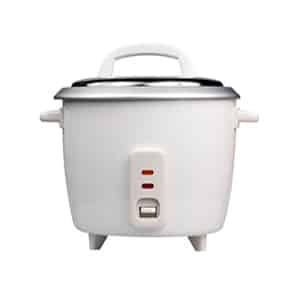
Conventional Rice Cookers
The type of rice cookers available in most markets are basic models which do not have any type of logic controlled cooking. If you take out the inner bowl and look inside the main body of the rice cooker, you will see a small round disk, about 3.8cm in diameter, in the centre of the heating plate. This is a thermal sensing device, known as a magnetic thermostat, and it sits on a small spring.
When rice and water is placed into the inner cooking pan and then put into the main body of the rice cooker, the weight of the inner cooking pan depresses the thermal sensor. With the rice cooker plugged in and the cooking switch turned on, the heating plate begins to heat up bringing the liquid in the cooking pan to a boil. Water boils at 100°C and no higher, so as long as there is water in the pan the rice cooker will continue to cook. When the rice absorbs all the water, the temperature will begin to rise since there isn’t any water left in the pan. When the thermal sensor senses that the temperature has risen above 100°C, the machine turns off the heater automatically.
This type of rice cooker is essentially an automated saucepan and common complaints are burnt or uneven cooked rice.and overspilling of water from the glass lid type of rice cookers.
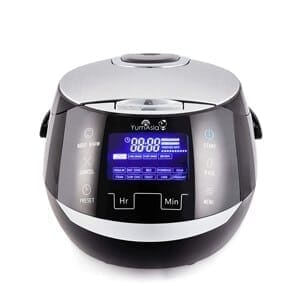
Fuzzy Logic Rice Cookers
All the rice cookers we sell utilise “fuzzy logic” which uses a micro computer chip to cook rice.
This is the brains of the unit, making the cooking of rice foolproof. Instead of the cooker simply switching on and off reacting to temperature, the rice cooker now makes small adjustments in temperature and cooking time using phased cook cycles according to what the thermal sensor or sensors detect. This means you can also have different programmes for the rice cooker which include cooking various grains such as white, sweet (glutinous), brown rice and porridge (both rice and oat varieties of porridge).
Additional features available with fuzzy logic models include cake baking, steaming function, slow cook and GABA brown rice. On certain models you will also see additional features such as soup, crust (for Persian Tahdig style rice), yoghurt and slow cooking that are particularly suited to the cooking environment which is used to cook the rice.
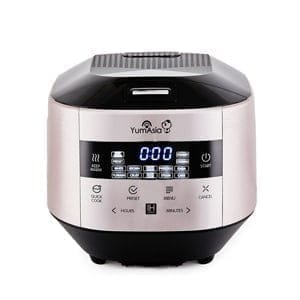
Induction (IH) Rice Cookers
Induction Heating (IH) in rice cookers occurs when coils in the bottom of the unit create a magnetic field. When the stainless steel inductive layer of the non-stick ceramic inner cooking bowl is placed into the rice cooker and the unit is activated, a magnetic field is generated to create instant heat throughout this layer.
The inner cooking bowl itself rather than the heating element becomes the heat source utilising both even yet high heat and fine heat adjustments to control the cooking process. By using these fine adjustments in cooking termperatures and moisture content it can utilise more advanced cook functions such as Yumami and GABA rice such as our Bamboo and Fuji models, the first Induction Heating rice cookers made for the UK and Europe.
Premium Signature Ceramic Rice Cooker Bowls
Yum Asia rice cookers include our signature ceramic Ninja, Joubu and SHINSEI inner bowls for perfect cooking
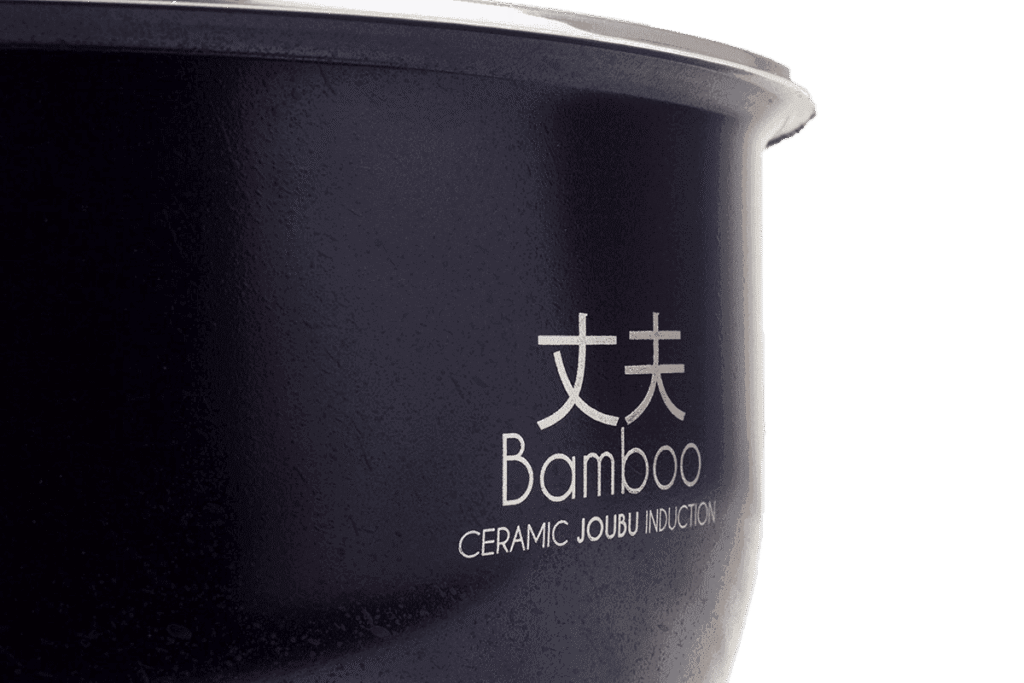
First UMAI Induction Heating (IH) In The UK And Europe
Our Hotaru, Fuji and Bamboo IH rice cookers push heating technology further
Exclusive to Yum Asia’s Bamboo and Fuji rice cookers is Umai Induction Heating (IH). Induction Heating in rice cookers occurs when coils in the bottom of the unit create a magnetic field that specifically heats up the inner bowl and contents.
‘Umai’ in Japanese means smart brain which refers to the microprocessor used to make fine adjustments in temperature and cooking times. Because our Umai IH system is so smart (and combines IH with advanced fuzzy logic AI), it makes our IH rice cookers more efficient, this means your rice is absolutely perfect every single time and it is cooked faster than other older type IH technology.
Balanced, Distributed Heating
Magnetic coils agitate the rice
UMAI Technology
Smart brain (AI) fuzzy logic for clever cooking
Surround Heating
Heats the bowl not the cooker
Accurate Temperature
Helps utilise different cook functions
Masters Of Rice Cooking
Yum Asia rice cookers have unique functions using the best technology to cook your rice!
PREHEATING PHASE
Bamboo starts to gently heat the rice and water using the Joubu bowl to between 50-60°C. This begins the cooking cycle and is key to the release of sugars into the water from the rice grains.
AGITATION PHASE
The Joubu bowl temperature is rapidly increased by the IH whilst the UMAI system makes micro adjustments to obtain a range of between 50-70°C. The rice then is agitated by the IH coils and the grains begin water absorption according to the function chosen.
HEATING PHASE
The temperature is increased again to between 75-85°C to start the actual cooking process. This varies depending on the function chosen.
BOILING PHASE
The UMAI controller then rapidly increases the temperature to minimum of 100˚C boiling point to evaporate the majority of the water from the inner bowl and to further cook the rice to soften and optimise texture.
STEAM PHASE – sugar reabsorption
Deep steaming then enables the rice to continue cooking while reabsorbing the sugars from the remaining water back into the rice whilst simultaneously evaporating the remaining water. This part of the cycle makes the rice taste sweeter, more nutritious, have better aroma/texture and completes the final rice grain cooking.
COOL DOWN PHASE
Water balancing then occurs using low temperature range cycling to ensure there is no remaining water left and that the rice has the correct moisture content.

BURST PHASE
Depending on the what is being cooked the UMAI system may determine that an additional burst of rapid heating is applied. This prevents over saturation of rice and pulls more nutrients into the rice grains.
KEEP WARM AND STEAM PHASE
The temperature is then held at an optimal 70-76°C to continue to steam the rice and keep the rice safe from bacteria. This ensures the rice is perfectly cooked, fluffy and delicious and ready for when you need it.
What Is Advanced Fuzzy Logic?
Our Yum Asia rice brand cookers all use advanced fuzzy logic (a type of AI) to ensure rice is cooked perfectly every time. This graph shows how the the ‘brains’ of the cooker adjusts the temperature using the weight and detecting the heat inside the bowl along with pre-programmed conditions to cook rice on a typical cooking cycle. The graph shows a detailed explanation of a typical cook process.but varies with each type of function being used.

THE ESSENTIAL COOKING PHASES
PREHEAT– Cooker starts to gently heat the rice and water in the inner bowl to start the cooking cycle; this is key to the release of sugars into the water from the rice grains.
ABSORB WATER – This phase of the cooking cycle slightly increases the cooking temperature so the rice can start absorbing the water.
HEATING– The temperature is increased again to start heating the water and rice in the inner bowl to start the cooking process of the rice.
BOILING– Cooker rapidly increases the temperature to 100˚C, boiling point to evaporate the majority of the water from the inner bowl and to cook the rice part way.
STEAM– The steaming part of the cooking cycle enables the rice to continue cooking while reabsorbing the sugars in the remaining water back into the rice whilst simultaneously evaporating the remaining water. This part of the cooking cycle makes the rice taste sweeter.
COOL DOWN – This water balancing part of the cooking cycle ensures there is no remaining water left
KEEP WARM AND STEAM – The final part of the cooking cycle is to hold steady at the perfect temperature to continue to steam the rice. This ensures the rice is perfectly cooked, fluffy and delicious
What Is The GABA Rice Function?
The GABA brown rice (or germinated brown rice) function uses specific timing and temperatures so the brown rice is allowed to germinate. When you select the GABA function on Bamboo or Fuji they will soak and activate the brown rice for you using the Umai (smart brain) fuzzy logic control after which it begins to phase in the cooking process. During this process, the inner bowl and its contents are kept at a specific temperature for part of the cooking cycle which enables the brown rice to ‘sprout’. More details…
The full cooking time for GABA rice in Hotaru, Bamboo or Fuji, including the additional activation period, takes around 2 hours 25 minutes to complete. The result of this process alters the flavour and increases the levels of nutrients such as gamma-aminobutyric acid (GABA). GABA brown rice has a softer texture than brown rice and a nuttier flavour.
Zojirushi models NS-YSQ10/18 also have a GABA brown function and the full cooking time, including the additional activation period, takes may take between 3 hours and 15 minutes and 3 hours and 35 minutes to complete.
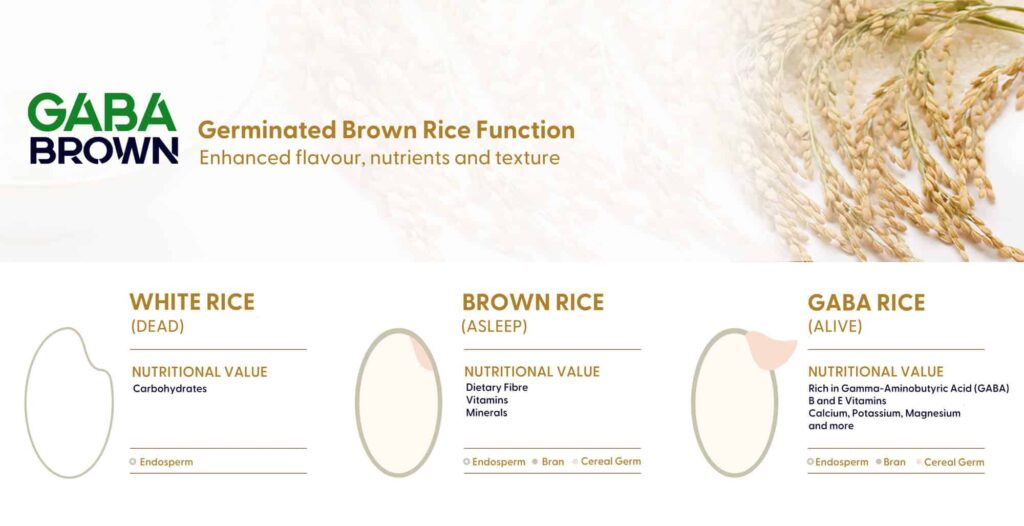
Explore GABA In Detail
Hatsuga genmai (or germinated brown rice) is unpolished brown japonica (Japanese) rice, that has been allowed to germinate in order to alter the flavour and also to increase levels of nutrients such as gamma-aminobutyric acid (GABA). Hatsuga genmai has a softer texture than brown rice and a nuttier flavour.
Germinated (GABA) rice an emerging health food where any type of brown rice is soaked in warm water prior to cooking; the warm bath induces germination, or sprouting, which stimulates rice enzymes to produce more nutrients. One of these nutrients is the important brain chemical GABA (which is why germinated brown rice is referred to as “GABA rice”), and some scientific studies have shown that a germinated brown rice rich diet can improve cognitive function and other studies have found that it could also act as an anti-diabetic.
GABA (gamma-aminobutyric acid) is an essential amino acid and was “discovered” in 2004 as part of the United Nation’s Year of Rice research. By germinating the brown rice prior to cooking, GABA, lysine (another amino acid), tocotrienols, magnesium and zinc are all significantly increased. To make GABA rice, you need to start with brown rice – this is because white rice has had the hull removed, which means that it is no longer capable of germinating. The brown rice is rinsed, then soaked in water for an extended period of time before cooking. As the rice germinates the amount of gamma-aminobutyric acid increases.
Take a look at our explainer image – on the tip of each grain of rice is an embryo; this is the part of the seed that will germinate. The rice is soaked until the embryo become fuller and larger or a sprout starts to emerge. This means the rice has germinated. Since water is naturally absorbed during the germination process, GABA rice will cook faster and need less cooking liquid, than other forms of rice.
Fans of GABA rice say that it’s less irritating to the digestive tract and less likely to promote allergic reactions than regular rice and believe that its nutrients are better absorbed. However, all rice is generally considered a non-irritating food and is unlikely to produce allergic reactions in most people. Emerging research suggests that sprouted brown rice may contain compounds that promote blood sugar control. However, the studies showing an advantage for diabetes are generally comparing sprouted brown rice to refined white rice; there’s usually no difference compared to regular brown rice. Whether or not it’s actually healthier than regular brown rice is unknown, but some people prefer it simply for its softer texture and mildly nutty flavour. People who have trouble making the move from white to brown rice may find the taste and texture of sprouted brown rice a good mid-point between the two.
GABA brown functions on rice cookers makes it much easier to cook GABA brown rice, our Hotaru, Bamboo, Fuji and Zojirushi models NS-YSQ10/18 or NL-GAQ10/18 have a GABA brown function which can be used with any type of brown rice.
What Is The Yumami Rice Function?
Yumami or ‘extra tasty’ rice function on Hotaru, Bamboo and Fuji enhances the flavour of any type of white rice by using a specially designed cooking cycle,
It does this by using a sequence of soaking and steaming to release the sugars contained in the rice that are then reabsorbed back into the rice as a different chemical structure that can activate Umami receptors of the tongue which results in extremely flavourful rice with improved texture/taste. Often rice cooked this way is said to be ‘moreish’ due to the tongue umami receptor activation.
The full cooking time, including the special soaking and steaming, for the Yumami function on Tsuki, Bamboo and Fuji models is around 1 hour, 6 minutes.
Zojirushi models -YSQ10/18 and GAQ10/18 also have a ‘premium’ taste function which is similar to Yumami and the full cooking time, including the special soaking and steaming, takes around 1 hour and 15 minutes.
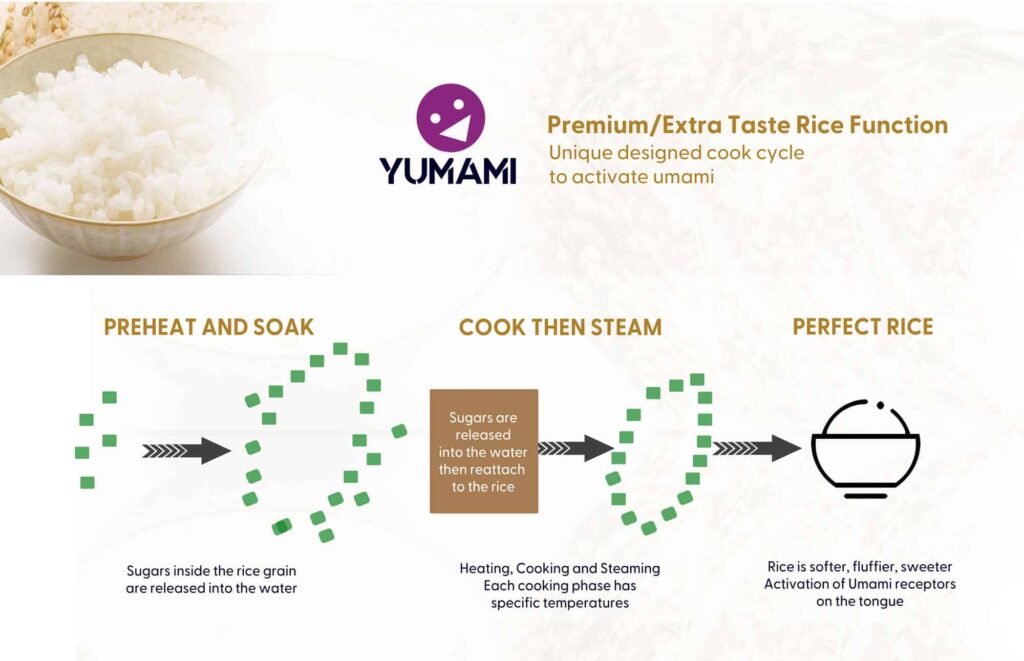
What Is YumCarb?
Did you know that there is a way to reduce the amount of carbohydrates that are naturally present in white and brown rice?
This can be of great benefit to people trying to lose weight (keto diets etc) and diabetics. Our Kumo rice cooker is unique in that it has YumCarb settings for both white and brown rice. By cooking rice in the provided stainless steel steaming basket, the rice is cooked in a special way so that the sugars in the rice are not re-absorbed and results in the cooked rice being up to 25%* lower in carb value
This reduction of glycemic load in starchy foods brings sugar levels down that are suitable for a diabetic diet and prevention of diabetes, obesity, and heart disease. This is achieved using the YumCarb cycle in combination with advanced fuzzy logic technology which, rather than simply boiling the rice (which strips out valuable nutrients) uses a multi phase cooking pattern to achieve rice with improved texture, taste, nutritional value and aroma.
*Based on lab testing, a reduction of 25% less carbohydrates was shown in white rice. Certified by Testing Institute of Product Quality Supervision, China.
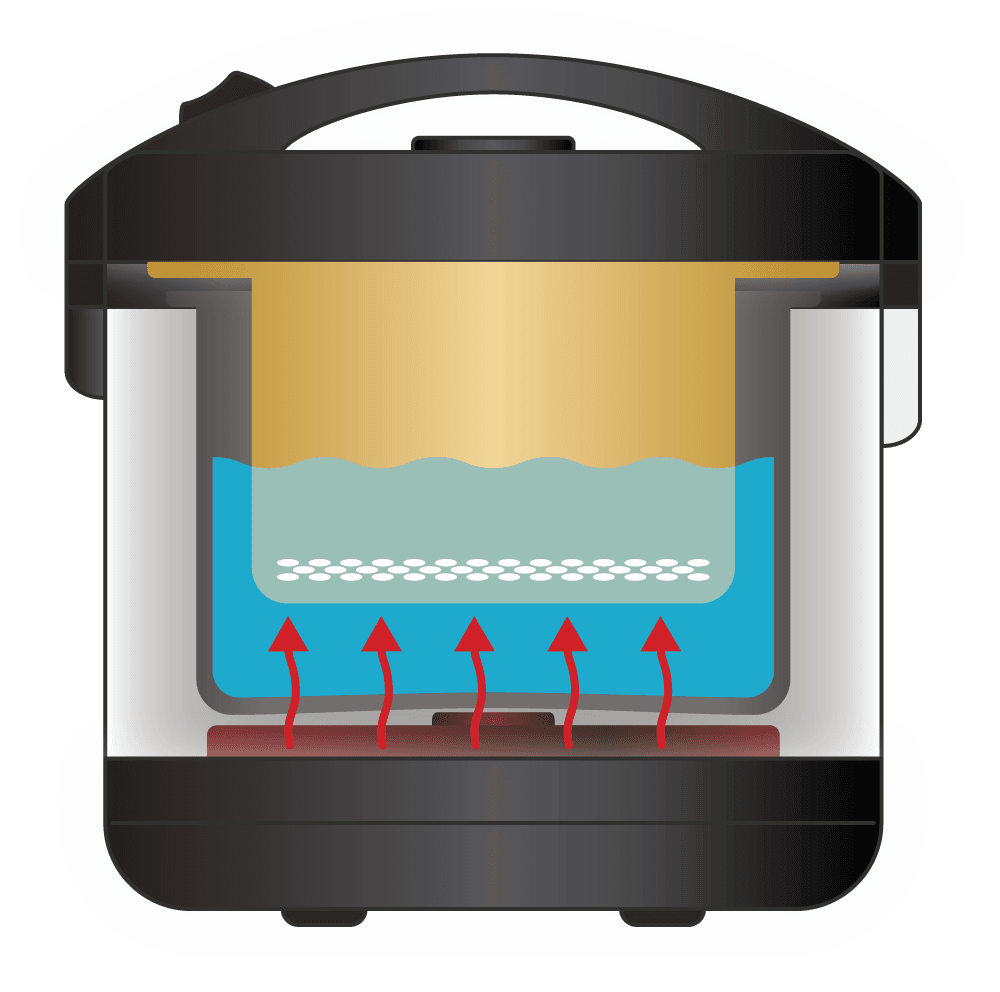
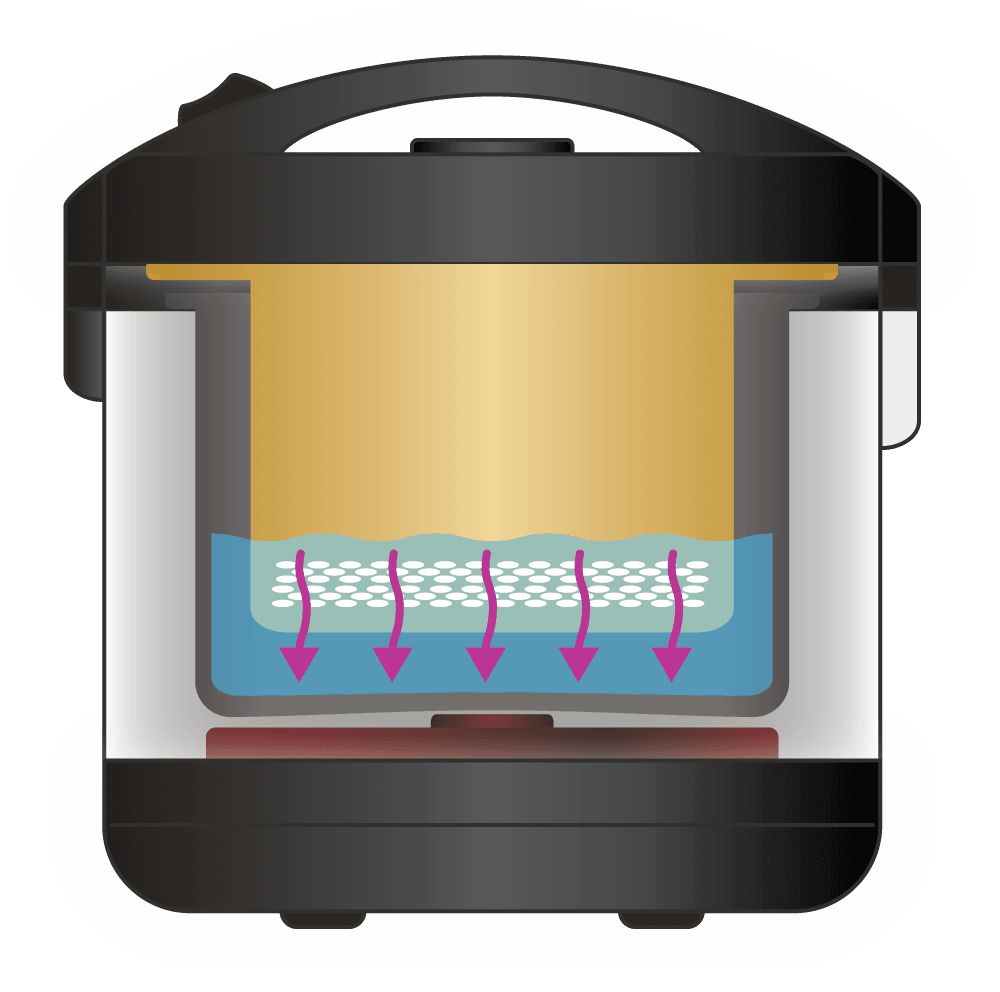
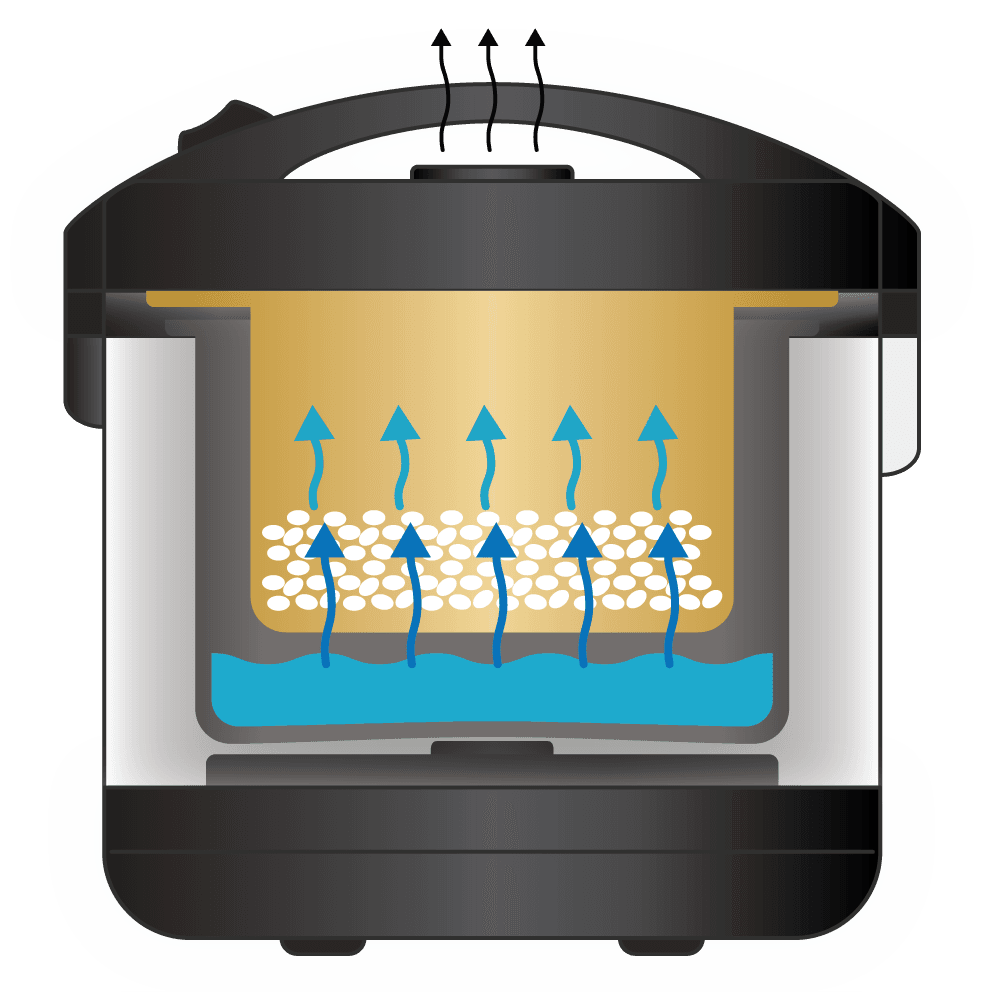
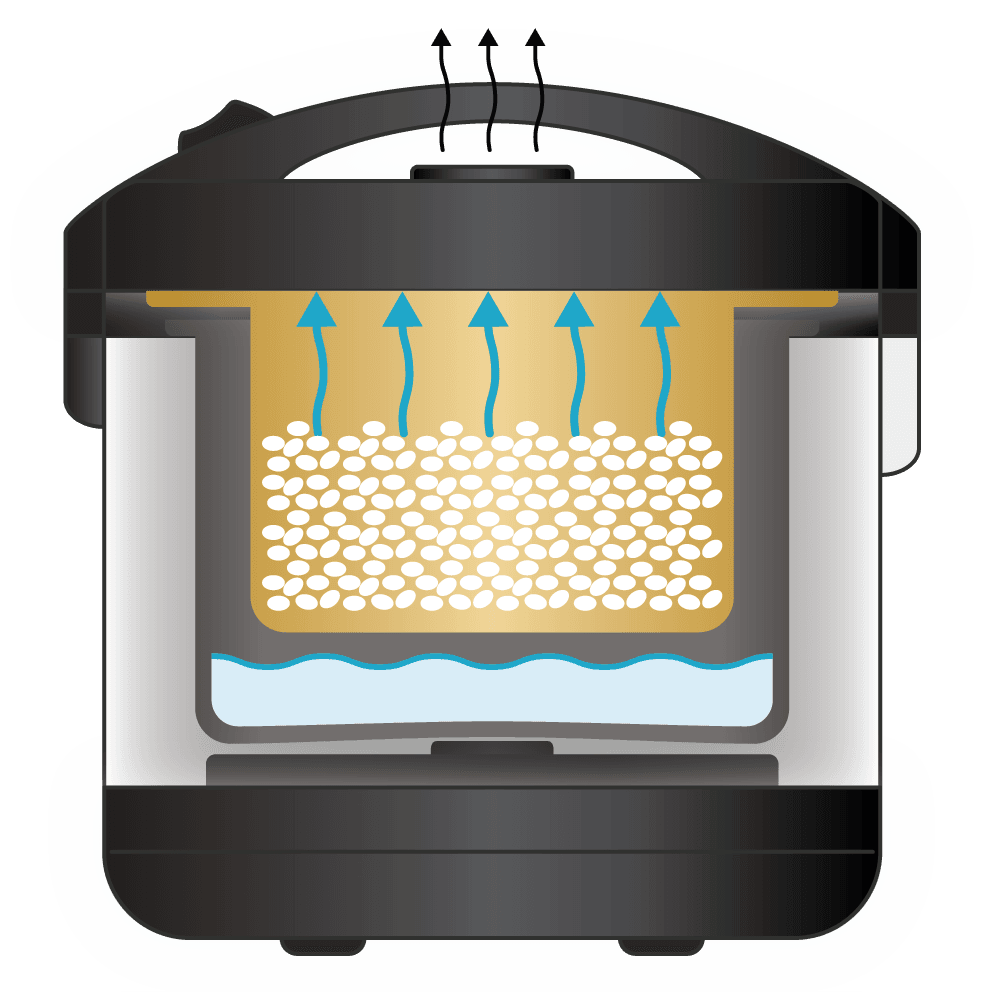
These Links May Also May Be Useful
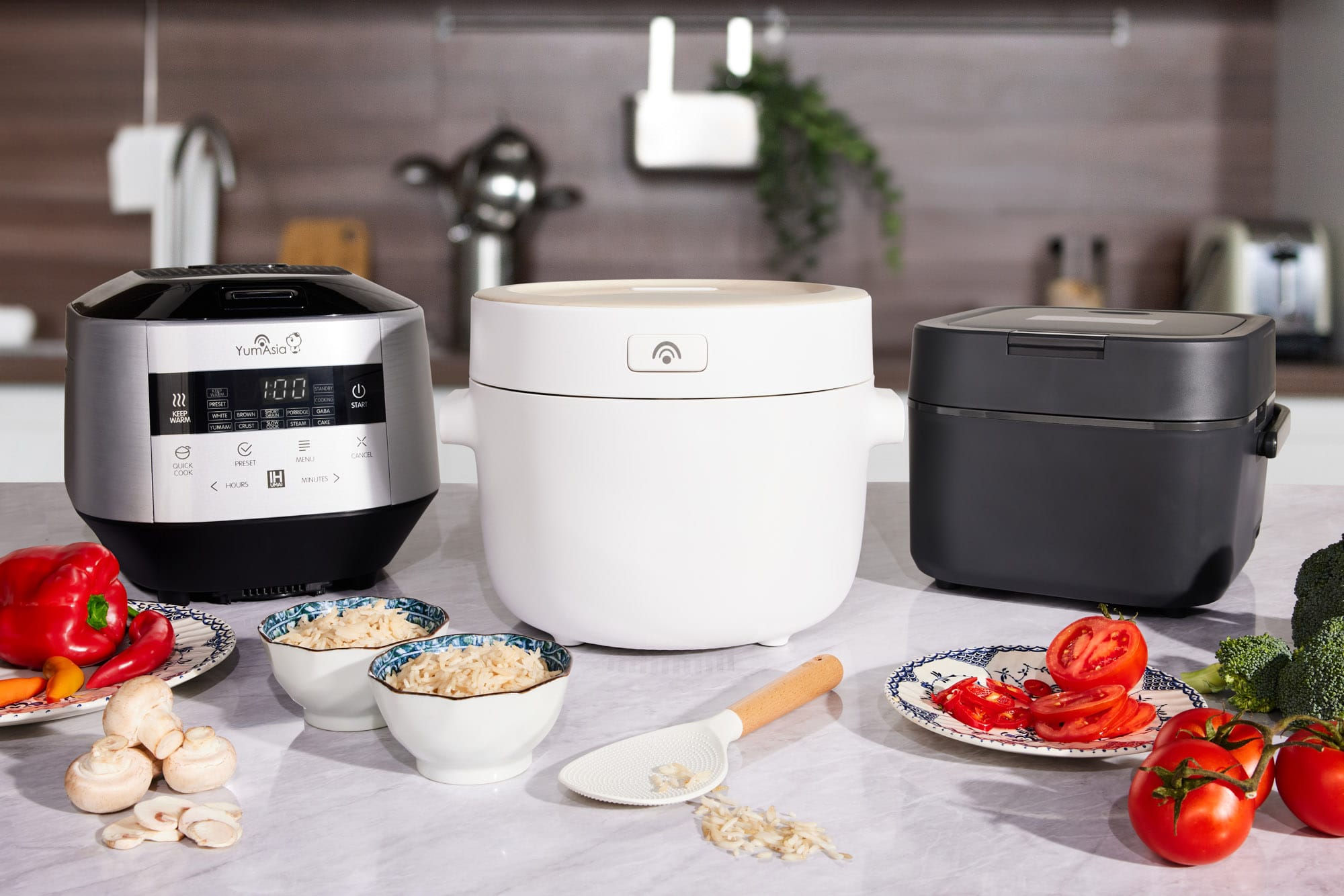
Learn why having a rice cooker should be an essential for any rice lover.
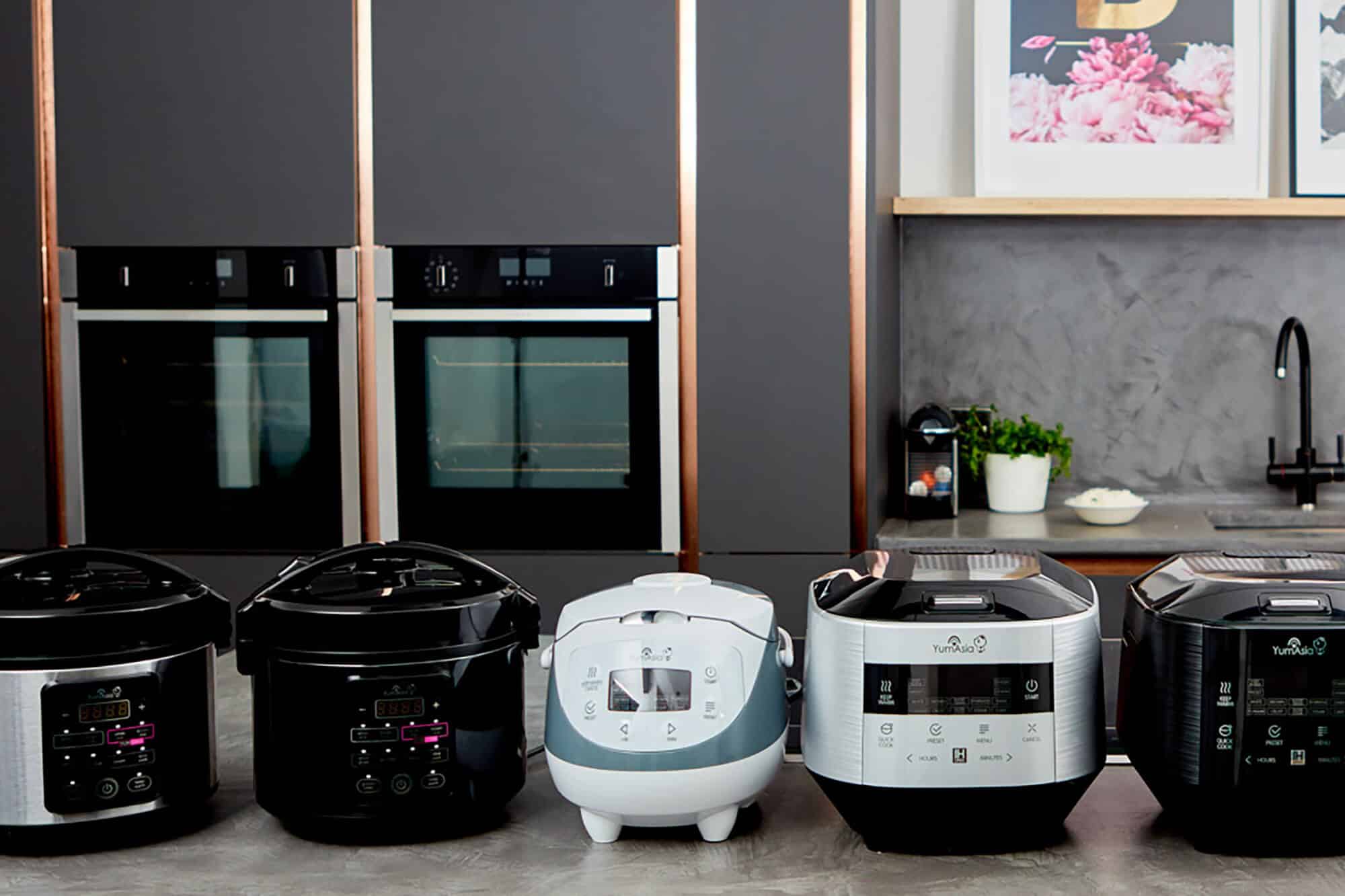
We have a very useful rice cooker comparison table where you can look at the features / functions of our rice cookers at a glance.
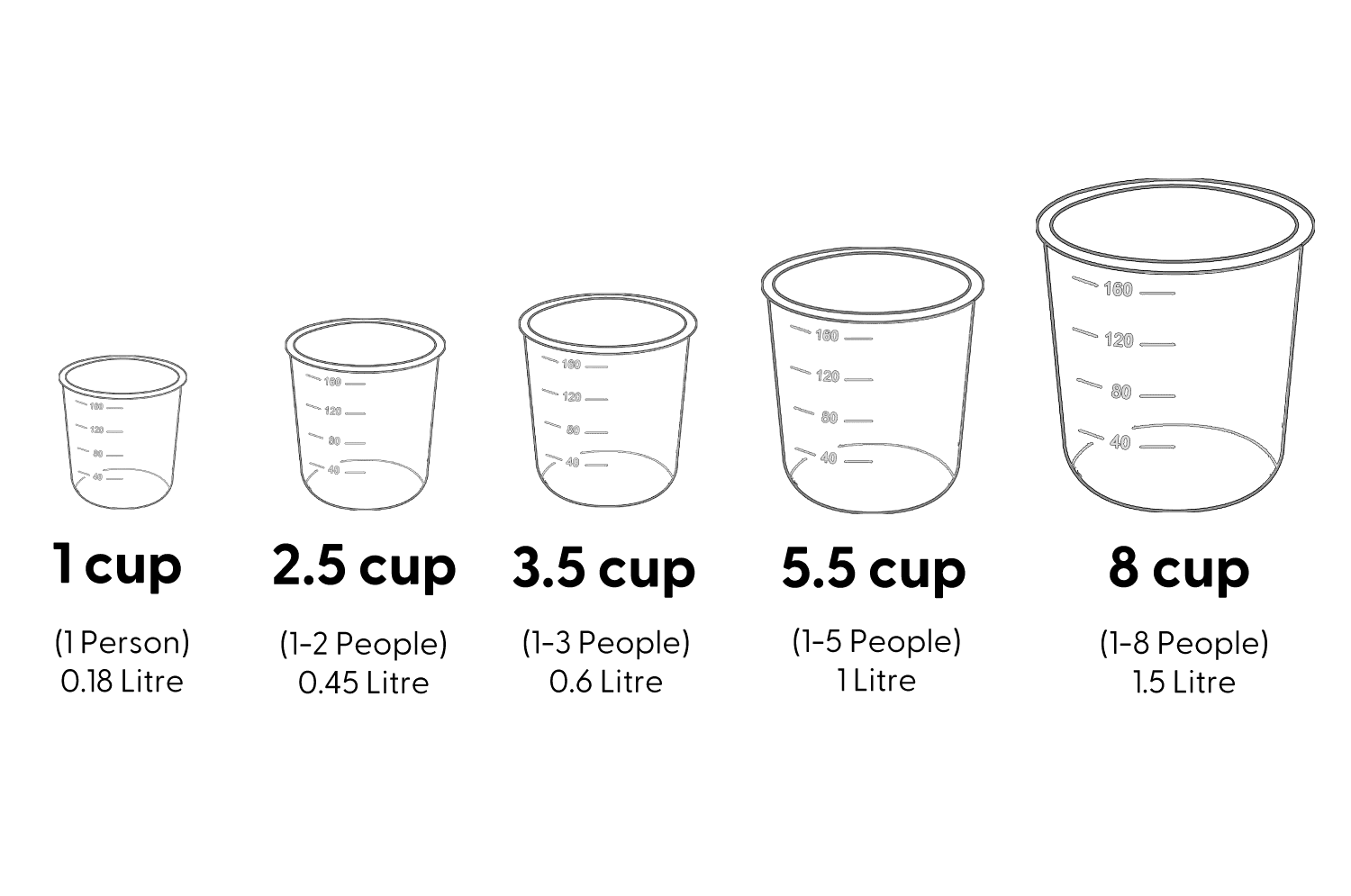
Let's talk about size and how to calculate your requirements which not only includes the amount of rice cooked but also the physical size of your cooker.
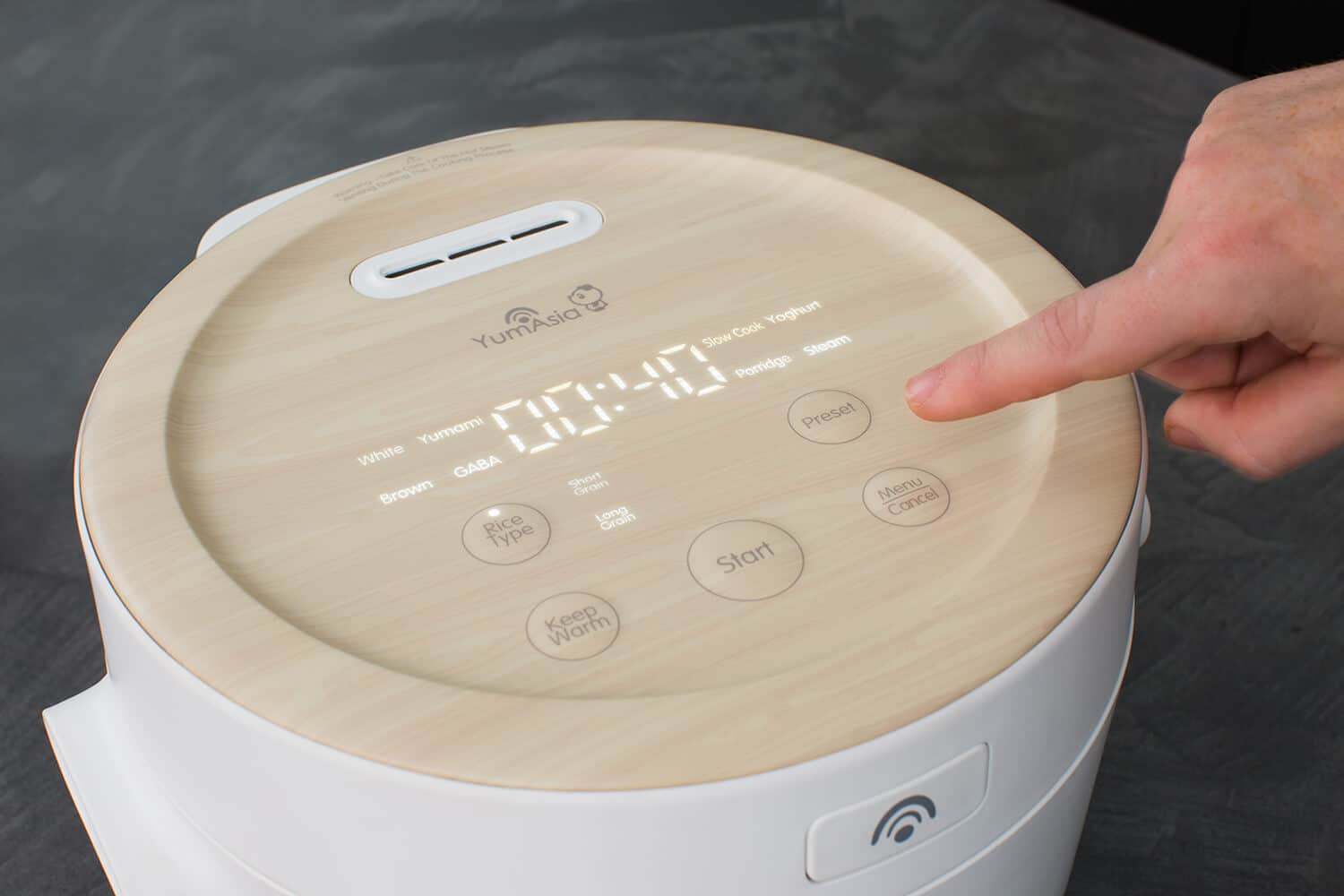
Arguably the most important part of a rice cooker. Learn which are more accurate and why and learn which have certain advantages over others.
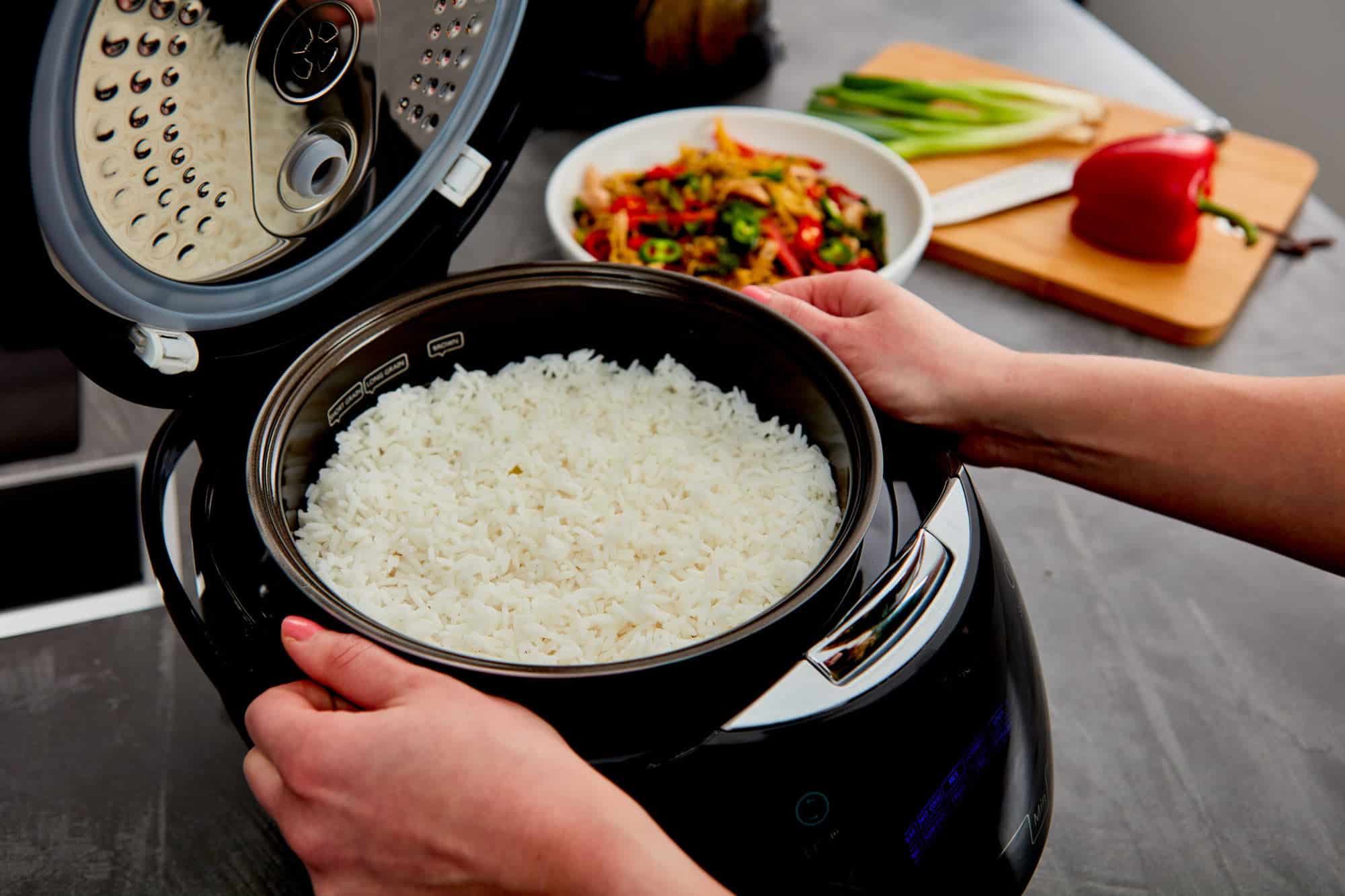
Arguably the most important part of a rice cooker but not all are created the same and some are better for you than others
We have a unique techologies that make our appliances stand out from the crowd. Thes are broad ranging so learn about them here..
FREQUENTLY ASKED QUESTIONS
Yes. The rice cookers and water heaters are factory made for UK / European 220-240V, 50Hz power or US power 120V, 60Hz. We sell US models on our USA website and UK/EU models on our EU/UK websites. Our cookers come with a 3 pin UK plug power cord for all UK orders and a 2 pin EU plug power cord for all EU orders. Please note that models bought in the US market run on a different power supply (110V) and WILL NOT work on UK or European power. Also models purchased in the EU and UK will not work on USA power supply. Please message us if you are unclear on which model is correct for your location.
The capacity of rice cookers can be confusing, especially because the international standard is to display the capacity in terms of litres of uncooked rice. To make it easy we have put together this table:
Capacity in cups* | Capacity in litres/kg | Number of people | Translation to cooked rice** |
|---|---|---|---|
3 cup | 0.5 litres or 500g | 1-3 people | 1.5 litres or 1.5kg |
5½ cup | 1 litre or 1kg | 1-5 people | 3 litres or 3kg |
8 cup | 1.5 litre or 1.5kg | 1-8 people | 4.5 litres or 4.5kg |
10 cup | 1.8 litre or 1.8kg | 1-10 people | 5.4 litres or 5.4kg |
* 1 cup = 180ml of uncooked rice
**1kg of uncooked rice = 3kg of cooked rice
Yes, if you want to cook just 1 cup of rice in Sakura or Bamboo, that’s not a problem. Even though there isn’t a mark for 1 cup on the inner bowl but it’s easy to measure the correct amount of water. When cooking one cup of rice, use the measuring cup, fill it to the top with water once so you get the correct amount of water and add this on top of the rice in the inner bowl.
The same goes for cooking half a cup in Panda, you would use the measuring cup filled with water to the half mark on the cup and add this on top of the rice in the inner bowl.
For Yum Asia models in Europe the manual is supplied in English, French, German, Italian and Spanish.
For Yum Asia models in the USA the manual is supplied in English, French and Spanish.
For Zojirushi models the language of the user manuals are English only
We supply many spare parts for our Yum Asia brand rice cookers such as inner bowls, inner lids. We also supply spare parts for Zojirushi from customers who have purchased their rice cookers from Yum Asia. Click here for our spare parts catalogue
Zojirushi IH models are very expensive and haven’t passed any CE safety tests, so therefore cannot be legally supplied within the UK or Europe.
Get answers to your questions
Try our help pages or get in touch
We work almost 24 hours, 7 days a week!
Our response usually takes up to 6 hours

